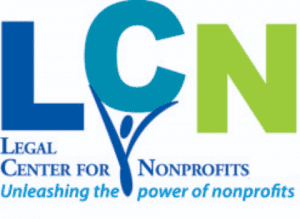All too often, when founders come to discuss an idea for a new nonprofit, and I ask, “How will you fund it?” the answer is, “We’ll get grants.”
But can they? And is that all there is?
As we’ve noted in a prior post, grants can be part of the funding plan, but should not be the entire plan. Where else should a nonprofit look for funding?
One of the reasons nonprofits seek 501(c)(3) public charity status is because it enables donors to deduct their charitable gifts on their taxes. While this is impacted by the new tax law, private giving will continue to be an important area of fundraising for nonprofits—many people do not and have not itemized their taxes, yet continue to give generously to nonprofits.
In fact, Robin Cabral, professional development counsel and founder of Development Consulting Solutions, says, “The most reliable sources of nonprofit funding are from private giving. Giving USA’s most recent statistics note that out of the $410.02 billion given in 2017, 70%, or $286.65 billion, was given by individuals.”
Considering those statistics, it’s clear that your fundraising plan should include soliciting private individuals. One common way to do this is through annual appeal letters that tell a compelling story about your nonprofit’s work. But you need not limit such appeals to an annual occurrence. If you can round up a sufficient number of volunteers or staff to help, your organization can and should send appeal letters more often.
In addition, you should look to private donors for larger gifts; developing a major gifts program should be a goal for most nonprofits.
Fundraising events are another traditionally used tactic, but event planning is labor intense, and does not always deliver the expected results.
In reality, traditional fundraising should not be the only funding stream in your nonprofit’s quest for sustainability. Your nonprofit’s board of directors must think strategically about funding, and look to other options, such as merchandise sales or fees for services, or for some nonprofits, governmental contracts.
A word of caution: As your board develops new funding strategies, it must always consider whether a planned activity will run afoul of the tax code’s unrelated business income rules. While fundraising—that is, solicitation of charitable gifts from the public—generally will not result in unrelated business income because of its intermittent nature, other activities, such as merchandise sales, can result in “unrelated income.”
Unrelated in this context refers to the activity’s relationship to the nonprofit’s exempt purpose—charitable, educational, religious, scientific, etc. Let’s consider a food pantry. A food pantry’s exempt purpose is charitable, specifically, to provide “relief of the poor and distressed or of the underprivileged.” If the food pantry opens a restaurant that is operated like any other commercially established restaurant, the income from this activity will be deemed unrelated, because it has nothing to do with providing food to the poor and needy. But if the food pantry opens the restaurant to provide on-the-job training to the poor and under-employed, this activity may in fact be related to the food pantry’s exempt purpose.
The problem with unrelated business income is that it is subject to tax. Thus, your board must consider whether the income that might be realized is worth the risk. The area of unrelated business income is complex, with many exceptions and exemptions; legal or accounting professionals can assist with the analysis and planning to minimize tax liability.
As you can see, successful fundraising requires a lot of thought and effort, but by carving out time to focus on your plan and seeking out the right help, you can tap into important resources that will facilitate the advancement of your nonprofit’s mission.
